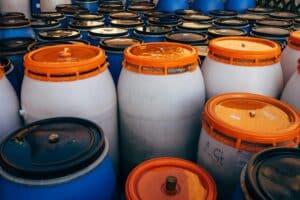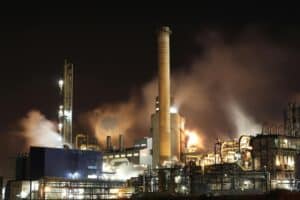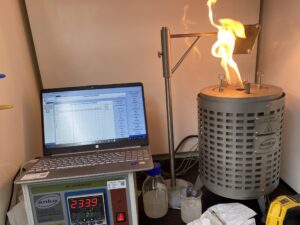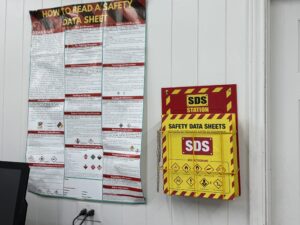We also offer
Oxidizing Solids Test
The oxidizing solids test determines the oxidizing properties of solid substances. These tests are essential for classifying hazardous materials, especially those that may promote or accelerate combustion. The main objective is to assess whether a solid, when in contact with combustible or reducing materials, can ignite or significantly intensify combustion.
Substances identified as oxidizing solids receive specific hazard classifications, labels, and identification numbers according to international transportation regulations (such as the UN/DOT system) to ensure safe handling and transport.
Testing Principle and Methodology
The test evaluates the potential of a solid substance to increase the burning rate of other combustible materials when mixed together. The selected substance is combined with fibrous cellulose and compared to a reference mixture of potassium bromate and cellulose.
-
Sample Preparation
-
Test sample: mixed with cellulose in 4:1 and 1:1 mass ratios.
-
Reference sample: potassium bromate mixed with cellulose in 3:7, and if necessary, 2:3 or 3:2 ratios.
-
Cellulose: fibers 50–250 μm in length and ~25 μm in diameter, dried at 105 °C to constant mass (at least 4 hours) and stored in a desiccator until use.
-
Potassium bromate: pure, sieved (not ground) to particle sizes 0.15–0.30 mm, dried at 65 °C for at least 12 hours, and stored in a desiccator until use.
-
-
Particle Size Check
-
Samples are tested in the form in which they will be transported.
-
If more than 10% of the sample has particles smaller than 500 μm, or if the substance is friable, the sample is ground to a powder before testing to reflect potential size reduction during handling and transport.
-
The first test uses the reference sample at a 3:7 ratio. A 30 g ± 0.1 g mixture is formed into a truncated conical pile with a 70 mm base using a funnel. The pile is then placed over the ignition wire, the heating element is switched on, and the timer started. The time to completion of the main reaction (flame, glow, or both) is recorded, while intermittent reactions, such as arcing or spraying after the main reaction, are ignored. If the mixture does not ignite or burn within 3 minutes, the test ends.
Applicable Standard
This test is performed according to the UN Recommendations on the Transport of Dangerous Goods, Manual of Tests and Criteria – Test O.1 (Test for Oxidizing Solids).
Data Interpretation
We compare the mean burning time from five tests with the burning time of the reference mixture (3:7 potassium bromate to cellulose) to classify oxidizing solids accurately.
-
Not Division 5.1: Any substance that does not ignite, does not burn, or has a longer burning time than the 3:7 reference mixture.
-
Packing Group I: Substances (4:1 or 1:1 ratio with cellulose) that burn faster than the 3:2 reference mixture.
-
Packing Group II: Substances (4:1 or 1:1 ratio with cellulose) that burn equal to or faster than the 2:3 reference mixture, but do not meet Group I criteria.
-
Packing Group III: Substances (4:1 or 1:1 ratio with cellulose) that burn equal to or faster than the 3:7 reference mixture, but do not meet Group I or II criteria.
When to Perform Oxidizing Solids Test
The oxidizing solids test is recommended in several scenarios:
-
Before transporting or handling solid substances in industrial or commercial settings, to ensure proper hazard classification and labeling.
-
During Safety Data Sheet (SDS) preparation, to include accurate hazard information.
-
Before shipping or long-term storage, particularly in confined spaces, to determine packaging, segregation, and transport conditions that minimize fire risks.
Why Choose Prime Process Safety Center
Prime Process Safety Center is a leader in process safety testing with highly experienced laboratory personnel.
-
Accurate and reliable results – Our team follows strict protocols to provide defensible data.
-
Advanced testing equipment – State-of-the-art technology ensures precise and sensitive measurements.
-
Strict quality control – Consistent procedures deliver dependable results.
-
Expert analysis – We interpret test data and provide recommendations tailored to your specific application or research.
At Prime Process Safety Center, our mission is to deliver accurate, reliable data that meets both industry and regulatory standards, helping you safely classify, transport, and manage oxidizing solids.
FAQ
What Are Oxidizing Solids?
Answer: Oxidizing solids are substances that, in contact with combustible or reducing materials, can cause or significantly aid in the combustion of those materials by providing oxygen, even without atmospheric oxygen.
How Are Oxidizing Solids Identified?
Answer: Oxidizing solids are identified through laboratory tests that assess their ability to promote or intensify combustion. The testing determines if the substance exhibits oxidizing properties under specific conditions.
Why Are Oxidizing Solids Hazardous?
Answer: Oxidizing solids pose a fire hazard because they have the potential to initiate or accelerate the combustion of other materials, increasing the risk of fire or explosion in their presence.
What Are the Safety Precautions for Handling Oxidizing Solids?
Answer: Safety precautions include storing oxidizing solids separately from flammable materials, using appropriate containers to prevent contamination, avoiding heat sources, and following proper handling and disposal procedures.
What Regulations Govern the Handling and Transport of Oxidizing Solids?
Answer: The transportation and handling of oxidizing solids are regulated by various international standards and guidelines, such as those established by the UN, DOT, and other regulatory bodies, outlining specific packaging, labeling, and transportation requirements.
















